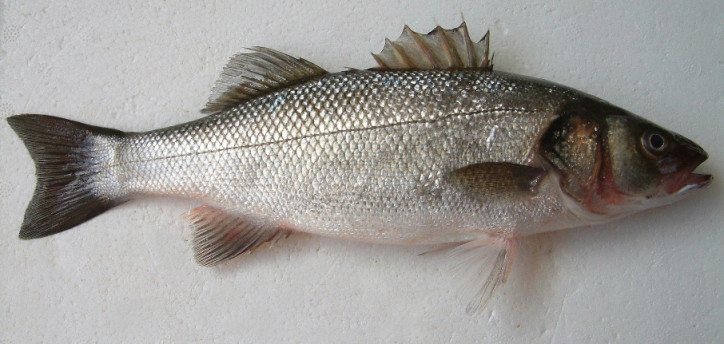Fish of the Dicentrarchus genus of the Moronidae (temperate basses) family of the superfamily Percoidea of the Perciformes order of the Acanthopterygii superorder.

(European seabass. Photo by © Roberto Pillon. naturamediterraneo.com)
European seabass (Dicentrarchus labrax) was first described in 1758 by the Swedish naturalist Carl Linnaeus (1707-1778).
It is a sea inshore fish species that inhabits the brackish and fresh water as well. It prefers to swim at the mouths of rivers, it may also swim upstream. The maximum recorded length is 103 cm, specimens up to 50 cm long are found. The maximum weight is 14 kg. It feeds on fish.

(European seabass. Photo by © Fabio Crocetta. fishbase.org)
It is a permanent inhabitant of the Adriatic Sea. It may swim upstream for considerable distances to get into the rivers flowing into the sea.
Names of European seabass (Dicentrarchus labrax) in other languages as follows:
Levreku (Albanian), Лаврак (Lavrak) (Bulgarian), Farkassügér (Hungarian), Zeebaars (Dutch), Λαυράκι (Lavráki) (Greek), Lavraq (Hebrew), Lubina (Spanish), Branzino, Spigola (Italian), Europäischer Wolfsbarsch (German), Labraks (Polish), Robalo (Portuguese), Brancin, Lubin (Serbian, Slovenian, Croatian), Лаврак (Lavrak), Сибас (Sibas) (Russian), Lup de mare (Romanian), Bayağı levrek (Turkish), Bar européen (French), Mořčák evropský (Czech).